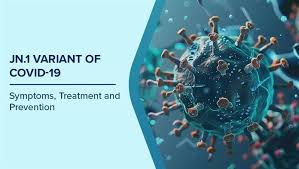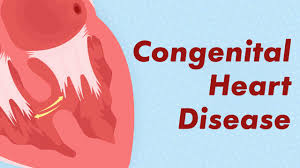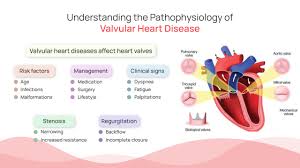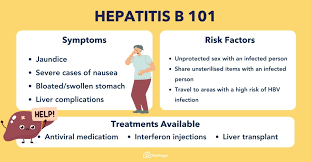
Table of Contents
COVID-19 (Coronavirus Disease 2019) is a respiratory illness caused by the SARS-CoV-2 virus, first identified in Wuhan, China in December 2019. It quickly spread across the globe, becoming a pandemic that affected billions of lives.
While many people experience mild flu-like symptoms, COVID-19 can cause severe illness, hospitalization, and death, particularly in the elderly and those with underlying health conditions. As of today, COVID-19 remains a reminder of the importance of public health awareness, vaccination, and hygiene practices.
🔎 Causes / Risk Factors
COVID-19 spreads mainly through respiratory droplets and aerosols when an infected person coughs, sneezes, or talks.
Causes:
- Direct Contact: Person-to-person close contact.
- Airborne Transmission: In poorly ventilated spaces.
- Surface Contamination: Touching surfaces with virus particles, then touching face.
Risk Factors:
- Age: Older adults (60+ years) are more vulnerable.
- Chronic Illnesses: Diabetes, heart disease, cancer, obesity, asthma.
- Weakened Immunity: People on long-term medications or with low immunity.
- Crowded/Closed Spaces: Public transport, offices, events.
- Unvaccinated Individuals: Higher risk of severe infection.
⚠ Common Issues / Symptoms
COVID-19 symptoms appear 2–14 days after exposure. They range from mild to severe:
🔴 Common Symptoms
- Fever, chills, and body aches
- Cough (dry or wet)
- Sore throat
- Runny/stuffy nose
- Fatigue
🔵 Less Common Symptoms
- Loss of taste or smell (anosmia)
- Headache, dizziness
- Nausea, vomiting, or diarrhea
- Skin rashes
⚡ Severe Symptoms (Emergency Signs)
- Difficulty breathing / shortness of breath
- Persistent chest pain or pressure
- Bluish lips/face
- Confusion or inability to stay awake
👉 Severe cases can progress to pneumonia, acute respiratory distress, organ failure, or death if untreated.
📊 Table 1: Myths vs Facts
| Myths | Facts |
|---|---|
| COVID-19 is just like the flu | COVID-19 spreads faster and can cause severe complications |
| Only old people get COVID-19 | People of all ages can get infected |
| Masks don’t work | Masks reduce spread of respiratory droplets significantly |
| Vaccines cause COVID-19 | Vaccines cannot cause infection; they train the immune system |
| Once infected, you’re immune for life | Immunity may fade, reinfections are possible |
📋 Table 2: Do’s and Don’ts
| Do’s ✅ | Don’ts ❌ |
|---|---|
| Wear masks in crowded places | Ignore mild symptoms, assuming “it’s just a cold” |
| Wash/sanitize hands frequently | Touch eyes, nose, mouth with unwashed hands |
| Stay home if sick & get tested | Go to work/school while symptomatic |
| Get vaccinated & boosted | Believe misinformation/rumors |
| Maintain good ventilation indoors | Gather in poorly ventilated closed spaces |
🌱 Prevention / Awareness Tips
- Vaccination: Stay updated with recommended doses.
- Masking: Especially in crowded or enclosed public places.
- Hand Hygiene: Wash hands for 20 seconds with soap or use sanitizer.
- Social Distancing: Maintain safe distance when possible.
- Boost Immunity: Healthy diet, regular exercise, and proper sleep.
- Stay Informed: Follow credible health sources like WHO & CDC.
💊 Treatment / Care
COVID-19 treatment depends on severity:
- Mild Cases:
- Rest, fluids, healthy diet.
- Fever & pain relief with paracetamol.
- Home isolation to prevent spread.
- Moderate to Severe Cases:
- Oxygen therapy if required.
- Antiviral medications (under doctor’s supervision).
- Hospitalization in case of pneumonia or organ complications.
- Post-COVID Care (Long COVID):
- Some patients experience fatigue, brain fog, breathing issues.
- Requires rehabilitation, balanced diet, and gradual return to activity.
⚠ Seek medical help immediately if experiencing difficulty breathing or chest pain.
📖 Case Study / Real-Life Example
In India, during the second wave in 2021, lack of oxygen supply caused a major crisis. However, community initiatives — like oxygen langars (free oxygen supply camps) and local volunteer groups — saved thousands of lives.
Globally, the rapid development of COVID-19 vaccines became a scientific milestone, proving that collective effort can fight global health emergencies.
❓ FAQs
Q1. Can I get COVID-19 after vaccination?
A1. Yes, but vaccines reduce severity, hospitalization, and death.
Q2. What is Long COVID?
A2. Ongoing symptoms like fatigue, breathlessness, or memory problems weeks/months after recovery.
Q3. Can children get COVID-19?
A3. Yes, though usually milder. Vaccination is available in many regions.
Q4. Is COVID-19 seasonal?
A4. It can spread anytime but surges in waves due to variants and gatherings.
Q5. Do masks still matter?
A5. Yes, masks reduce risk in crowded or poorly ventilated places.
Q6. Can reinfection happen?
A6. Yes. Variants can bypass immunity; vaccination + precautions remain important.
🏁 Conclusion
COVID-19 has changed the way the world views health. While we’ve made progress with vaccines and treatments, the virus still exists, and awareness is our strongest shield.
💡 Remember: Precaution is better than panic. Stay informed, stay protected, and support one another.


